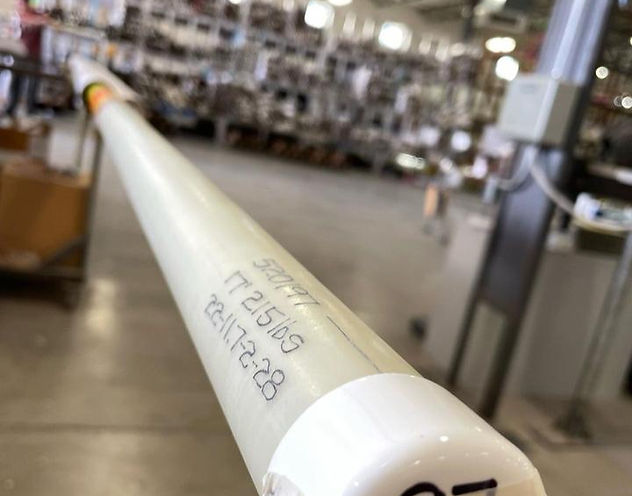Strength & Conditioning
- paul29416
- Oct 13, 2024
- 3 min read
Updated: 6 days ago
X Vault strength and conditioning philosophy for Pole Vaulters focusses around five key principles. Eccentric strength development, rate of force development, time to peak velocity, tissue stiffness and specific transferrable movement competencies.

Strength and Conditioning for Pole Vaulters: A Progressive Approach
Pole vaulting demands a blend of power, speed, coordination, and eccentric strength. Strength and conditioning can dramatically improve performance by optimising the athlete’s ability to generate and transfer force. Leading experts in the field, emphasise a progressive training approach incorporating key methods for enhancing these attributes.
Eccentric Strength for Take-off
The take-off in pole vaulting requires exceptional eccentric strength, particularly in the lower limbs, to decelerate the body and store elastic energy. Eccentric training should be introduced progressively, starting with controlled lowering movements such as slow eccentric squats or hex bar dead lifts progressing to more dynamic exercises like eccentric fly wheel then drop jumps. This allows athletes to tolerate greater forces and improve their take-off efficiency.
Rate of Force Development (RFD)
Generating speed and power in the vault is tied to an athlete’s rate of force development. RFD is improved through explosive movements like Olympic lifts (clean, snatch) and plyometrics. Additionally we can use partial lifts, step ups and medicine ball throws to generate force at speed.
Lifting Intent & Time to Peak Velocity
Lifting with intent is critical for pole vaulters aiming to improve power output, our athletes are taught to move weights explosively, regardless of load. We can select certain lifts, jumps and throws with a specific velocity component that replicates the contact velocity we are working towards. We feel focusing on the velocity component during lifts is crucial to transferring strength gains to sport-specific movements like pole vaulting.
Here is a chart to help you select the lifts that replicate your take off velocity.
Peak Force | SSC Duration m/s | Peak Force | SSC Duration m/s | Peak Force | SSC Duration m/s |
Sprinting | 80-90 | Long Jump | 140-170 | Pole Vault & HJ | 150-300 |
Time to Peak Vel | duration m/s | Time to Peak Vel | duration m/s | Time to Peak Vel | duration m/s |
Drop Squat 40k | 80 | 20cm Drop Jump | 130-300 | Box Jumps | 150-250 |
Drop Squat uni 100k | 90 | Hurdle Jumps | 150 | Jump Squat 100k | 260 |
Step up 5cm uni 50k | 90 | MT Clean Pull @30% | 150 | Hang Clean 70k | 300 |
1/4 Squat 100k | 110 | Med Ball Throws | 100-150 | Squat Jump | 320 |
|
|
|
| Hang Snatch 50k | 370 |
|
|
|
| Full Squat 80k | 390 |
|
|
|
| Hang Clean Pull 120k | 390 |
|
|
|
| CMJ | 390 |
|
|
|
| Floor Snatch 50k | 930 |
|
|
|
| Floor Clean | 1.53 |
|
|
|
| Floor Clean Pull 120k | 1.67 |
Tissue Stiffness - Complex Training
We incorporate plyometrics within a complex training framework to maximise both force development and speed. By pairing heavy lifts with dynamic movements like box jumps and pogo's, our athletes enhance both neural recruitment and muscle stiffness. Fundamental for developing runway speed and during take-off.
Specific Transferable Movement Competencies
Transferable movement competencies prioritise the transfer of training gains into actual athletic performance. We challenge traditional strength and conditioning by focusing not just on building raw strength or power, but on training the nervous system to develop coordination and control that carry over to pole vault specific movements.
Athletic movements (like sprinting, jumping, and vaulting) rely on complex, coordinated actions across multiple joints. To improve transferability, we ensure key elements such as elasticity and reactive strength, are included within our overall plan. Movements that enhance the stretch-shortening cycle, like bounding, reactive plyometrics and medicine ball throws apply directly to vaulting, where athletes need to generate maximum power off the ground quickly. Our methods ensure that strength and conditioning training directly enhances the athlete's ability to perform their sport, rather than simply boosting gym-based metrics.
Example lifting complexes
Please note these examples are time phased for athletes within their individualised training periodisation, lower & upper conditioning may have a different focus.
Primary lifts
Eccentric Focus 150+m/s Tri Set
Lift | Sets | Reps | Tempo | Recovery | Phase |
Band Hex DL | 4 | 4 | 401 | 3mins | Acc |
Depth Jump Hold | 4 | 3 | 101 | 3mins | Acc |
Bar Pogo's 20k | 4 | 8 | 101 | 3mins | Acc |
Accessory lifts
Lift | Sets | Reps | Tempo | Rec Set | Rec Exs |
RDL | 4 | 6 | 402 | 2mins | 2mins |
Iso Bosch DL | 4 | 10s | Nil | 10s | 2mins |
St Leg Ham Tantrums | 4 | 6s | 101 | 10s | 2mins |
Psoas Tantrums | 4 | 6s | 101 | 10s | 2mins |
90° SL Soleus Raise | 5 | 8 | 404 | 90s | 2mins |
Hip Flexor Drives | 3 | 6 | 101 | 90s | 2mins |
Upper Lifts
Session One | Set | Reps | Tempo | Rec Set | Rec Exs |
Bench Press | 4 | 8 | Mod | 30s | 3min |
Seated Military Press | 2 | 8 | Mod | 30s | 3min |
Prone Row | 4 | 6 | Mod | 30s | 3min |
Pull overs | 2 | 6 | Mod | 30s | 3min |
Videos
Olympic Lift Variations Videos



Comments